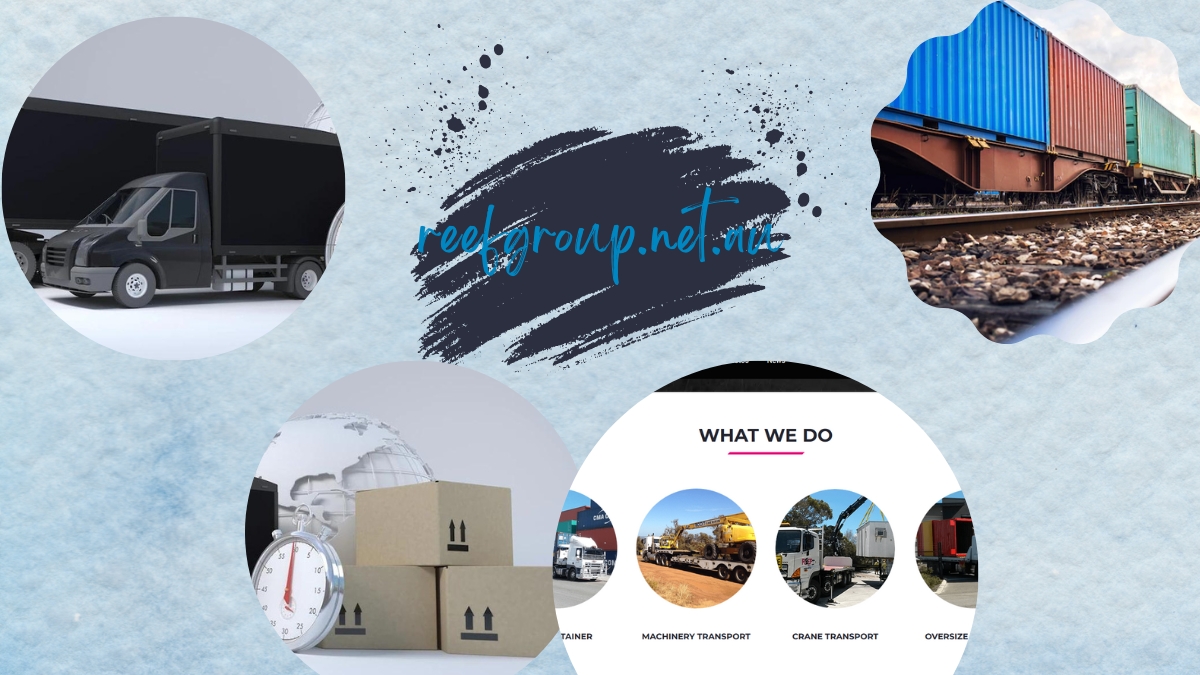Effective Methods for Transporting Goods Across Australia
Effective Methods for Transporting Goods Across Australia
Transporting goods across Australia can be complex and challenging, mainly due to the vast distances and the country's varied terrain and climate. However, with careful planning and appropriate transportation methods, it is possible to efficiently and effectively move merchandise from one location to another within Australia. So yes, there are Effective Methods for Transporting Goods Across Australia. Companies like Reef Group often use road transportation, through trucks or trailers, as a popular transportation method across Australia. This method allows for the transportation of a variety of goods, including bulky or oversized items, and provides the ability to make multiple stops and deliveries. Road transportation also allows for easy tracking of the goods in transit and the ability to address any issues that may come up swiftly.

Various methods of transporting goods across Australia
Another effective method for transporting goods within Australia is via rail. This option is particularly suitable for transporting large volumes of goods over long distances, as it can be more cost-effective and efficient than road transportation. Additionally, rail transportation can be a more environmentally friendly option, as it produces fewer emissions than road transportation. Similalry, another option for transporting goods across Australia is by air. While this method is typically more expensive than road or rail transportation, it is often the fastest and is suitable for time-sensitive or perishable goods. Additionally, air transportation can be an effective option for transporting goods to remote or isolated areas of Australia that may not be easily accessible by road or rail.
Now, let's talk about more options as below.
Marine transportation is also an option for moving goods within Australia. This method is particularly suitable for transporting large volumes of goods over long distances and for moving oversized or heavy items that may need to be more easily transported by other means. However, it is essential to note that marine transportation can be affected by weather conditions and may require additional time for loading and unloading at ports. In addition to these traditional transportation methods, several emerging technologies are being used to transport goods within Australia, including drones and autonomous vehicles. These technologies have the potential to significantly increase the efficiency and speed of goods transportation, particularly in remote or difficult-to-access areas.
Regardless of the transportation method chosen, it is essential to carefully plan and coordinate the movement of goods to ensure that they reach their destination safely and on time. It may involve working with a logistics provider or transportation company to handle the transportation of the goods and properly packing and securing the merchandise to protect it during transit. It is also essential to consider the transport cost when planning the movement of goods across Australia. While some transportation methods may be faster or more convenient, they may also be more expensive. By weighing the various options and considering factors such as the type and volume of goods being transported, the distance involved, and the time frame for delivery, it is possible to choose the most effective and cost-efficient method for transporting goods within Australia.
Transportation's environmental impact should also be considered when transporting goods within Australia. The country's varied landscape and ecosystems can be affected by the movement of goods, so choosing eco-friendly methods such as rail or marine transportation can help reduce a business's carbon footprint and minimise the impact of its operations on the environment. Another essential factor to consider when transporting goods within Australia is the safety of the merchandise. It includes ensuring that the goods are appropriately packed and secured to prevent damage during transit and adhering to any regulations or guidelines for transporting specific goods. For example, hazardous materials may have special requirements for handling and transportation to ensure the safety of the merchandise and the public.
Finally, it is essential to establish clear communication and coordination with all parties involved in transporting goods across Australia. It includes the logistics provider or transportation company, as well as any third-party vendors or partners involved in the movement of the merchandise. By maintaining open and regular communication, businesses and organisations can ensure that the transportation of their goods is seamless that s and efficient and that any issues or delays can be quickly addressed.
In conclusion, transporting goods across Australia can be complex and challenging. Still, with careful planning and appropriate transportation methods, it is possible to efficiently and effectively move merchandise from one location to another within the country. By considering costs, speed, safety, and environmental impact, businesses and organisations can choose the most effective method for transporting their goods and ensure they reach their destination safely and on time. And please make sure you pack well while you are transporting goods. Have a look at 8 Packaging Tips To Follow For Efficient Delivery.
